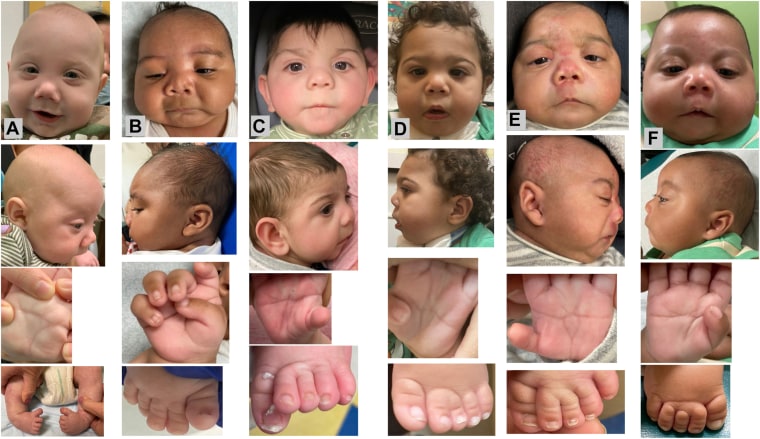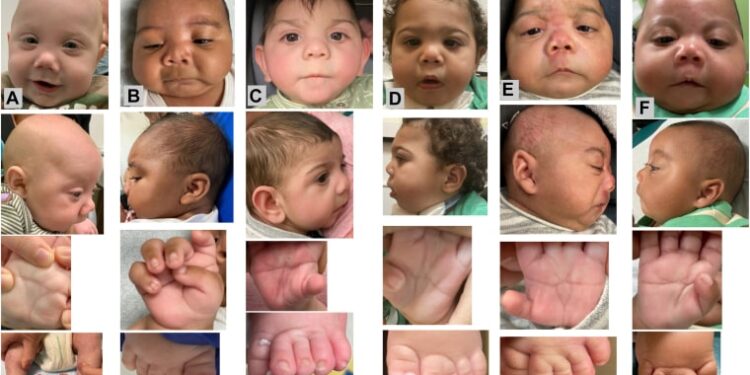The number of babies born with severe birth defects affecting their growth and development is rising, as researchers now have strong evidence that illicit fentanyl is causing the problems.
Hospitals have identified at least 30 newborns with what has been identified as “fetal fentanyl syndrome,” NBC News has learned. The babies were born to mothers who said they’d used street drugs, particularly fentanyl, while pregnant.
“I have identified 20 patients,” said Dr. Miguel Del Campo, a medical geneticist at Rady Children’s Hospital in San Diego who specializes in children exposed to drugs and alcohol in utero. “I fear that this is not rare, and I fear kids are going unrecognized.”
The syndrome was first identified in 10 babies last fall by geneticists at Nemours Children’s Health in Wilmington, Delaware. The infants had specific physical birth defects: cleft palate, unusually small heads, drooping eyelids, webbed toes and joints that weren’t fully developed. Some had trouble feeding.
Published research about the babies caught Del Campo’s attention. He’d previously diagnosed some children with similar abnormalities with fetal alcohol syndrome, even though their mothers denied drinking while pregnant.

“After reading the paper and thinking about things,” he said, “I have recognized the potential for exposure to fentanyl.”
Dr. Karen Gripp, a geneticist at Nemours, and her team were the first to identify the 10 babies with fetal fentanyl syndrome last fall. “This is another huge piece of the puzzle” explaining the defects, she said.
The birth defects in the babies closely resemble a rare genetic condition called Smith-Lemli-Opitz. It’s a condition that affects how fetuses make cholesterol, which is critical for the brain to develop properly. But none of the babies had Smith-Lemli-Optiz.
The mothers’ reported drug use was a strong clue as to what was causing the defects, but there was no scientific evidence that fentanyl stopped cholesterol production in developing fetuses.
When Gripp and a team of researchers at the University of Nebraska Medical Center exposed human and mouse cells to fentanyl, they discovered that the drug directly disrupted their ability to make cholesterol.
“This is not something that people had known before, that fentanyl interferes so significantly with cholesterol metabolism,” Gripp said. “This is so important because cholesterol needs to be synthesized as the embryo develops.”
Their paper explaining the connection was published in Molecular Psychiatry in June.
Who is at risk
Illicit fentanyl use during pregnancy is a known risk factor for preterm birth and stillbirth. Babies born after significant fentanyl exposure in utero may have seizures, vomiting, diarrhea and be irritable, fatigued and have trouble feeding.
But despite a rise in fentanyl misuse, even during pregnancy, there is no indication of a concurrent rise in birth defects. And most babies exposed to fentanyl in utero aren’t born with the defects that are hallmarks of the fetal fentanyl syndrome.
The new research helps to explain that.
While two copies of the gene that causes Smith-Lemli-Optiz result in the syndrome, cells with just one copy of that gene were more likely to be affected by fentanyl exposure.
That is, a single copy of the gene may make some babies more vulnerable.
“Not everyone is equally susceptible,” Dr. Karoly Mirnics, one of the study authors and director of the University of Nebraska Medical Center’s Munroe-Meyer Institute, said in a press release announcing the results. “The potentially adverse effects of any medication or chemical compound might depend on your genes, lifestyle and environmental factors. One drug might not cause problems for me and might be catastrophic for you.”
Gripp expects the number of documented fetal fentanyl cases will rise with awareness and continued research.
“The group is growing,” she said. “We anticipate that there will be many more patients.”
Del Campo, also an associate professor at the University of California San Diego, said it’s critical to diagnose babies appropriately with fetal fentanyl syndrome so doctors can follow them long term.
“We need to know how these kids are doing. I have some 2 year-olds that are very concerning,” he said. “They’re just not growing or developing.”







